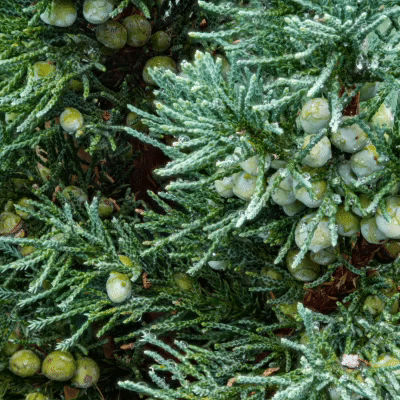Blog
Wild Aesthetics

by Cory Christopher, Director of Conservation
Do you know what “portmanteau” means? Literally, it’s a fancy word for suitcase, but conceptually, it’s a word made up of two other words.
Anyway, a particularly persnickety portmanteau has recently been ruffling feathers in the plant conservation world. “Nativar” is the portmanteau of “native” and “cultivar” and refers to a species of native plant that has been propagated for unique traits, like unusual leaf color or smaller size.
These traits make nativars quite different than their wild counterparts, otherwise known as “wild type” individuals.
Some nativars are natural accidents. For instance, “Grey Owl” cedar is a naturally occurring, dwarf variety of our eastern red cedar (Juniperus virginiana). Every Grey Owl cedar is a clone of one tree discovered in 1938 that happened to be shorter and greyer than other cedars.
Horticulturally, these condensed conifers now find use as landscape shrubs when taller trees aren’t practical. The convenience of their shrubby nature, though, comes with ecological trade-offs. For example, they don’t provide habitat for Saw-whet Owls (Aegolius acadicus), a species that prefers to nest in cedars, but needs the protection of denser, taller trees.
Other nativars have been artificially selected by gardeners for decades. The double-flowered coneflowers (Echinacea spp.) are hybrids with fluffy center cones. Bees that normally sip nectar from wild type coneflowers can’t physically reach the nectar in double-flowered nativars.
These flowers provide aesthetic appeal, but little ecological substance. And herein lies the controversy. Are nativars “native,” or are they something else?
Essentially, nativars are bred for practical or aesthetic appeal and don’t necessarily retain the ecological roles their wild ancestors played. But, unless you’re trying to restore the ecological integrity of your yard, you don’t need to be botanically puritanical.
There is no reason we can’t have nativars in our yards, provided we do it thoughtfully.
My rule of thumb is to treat nativars and non-invasive exotics like garden gnomes—a couple can provide some fun and whimsy, but more than that is just, well, silly—both for us and the wildlife with which we share our yards.